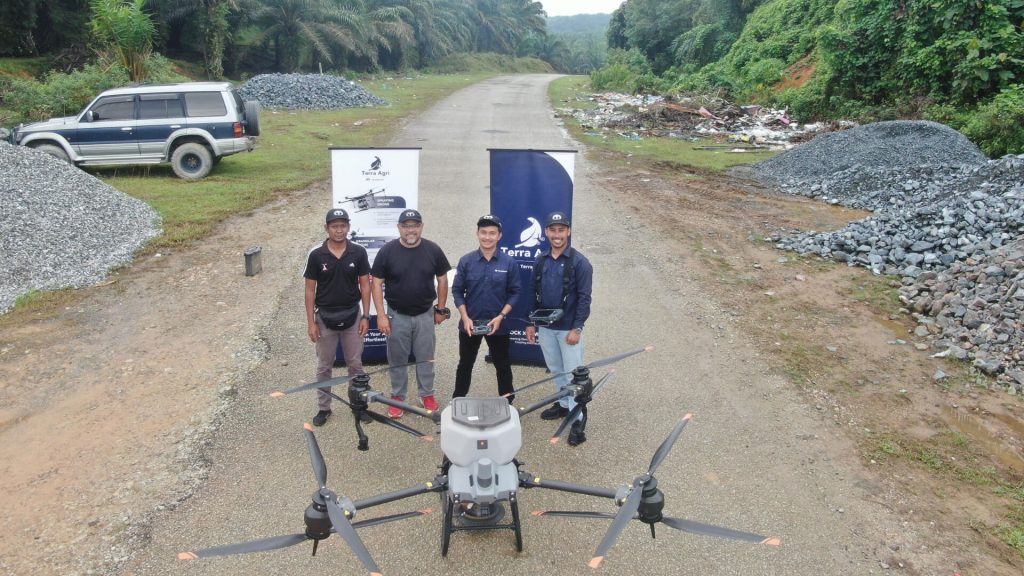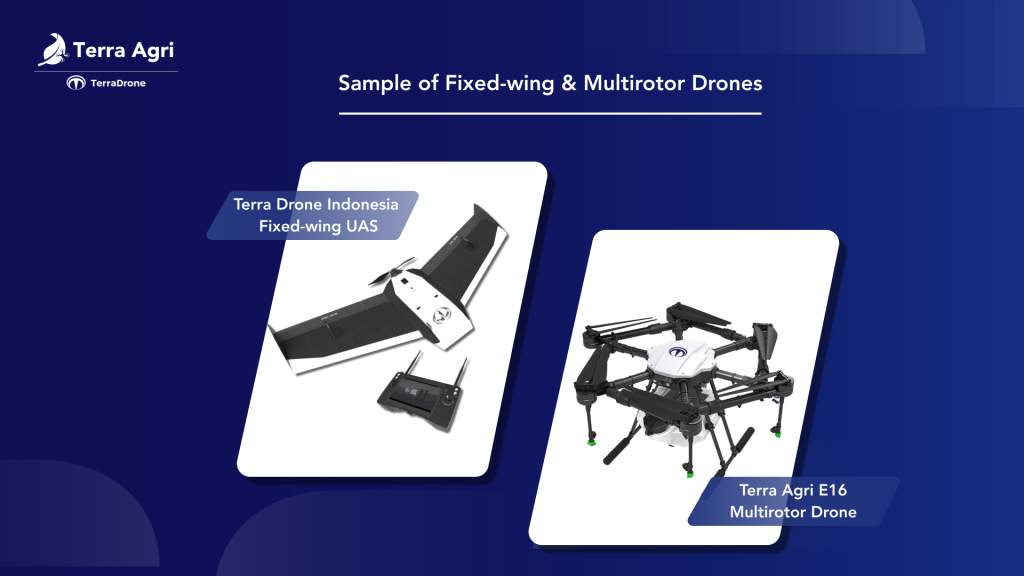In the era of digital transformation, agriculture is also embracing technology. Agribusinesses are increasingly using technology to improve their operations and raise productivity levels. Among the most innovative advancements, agricultural drones offer a new viewpoint on managing crops. These drones deliver critical insights into crop health and needs, allowing for precise interventions and enhancing yields.
However, not all drones are created equal. Regarding agricultural use, the choice between fixed-wing and multirotor drones can significantly impact the efficiency and effectiveness of your farming practices and your budget. This decision isn’t just about technology; it’s about finding the right partner to walk your fields, monitor your crops, and help you feed the world. Understanding each drone type’s unique features, advantages, and limitations will empower you to make an informed choice, considering potential cost implications and maximizing the benefits for your specific agricultural needs.
A Comprehensive Agricultural Drone Comparison: Fixed Wing vs Multirotor Drones
Drone technology in agriculture mainly consists of two types: fixed-wing and multirotor drones. Let’s delve into their features, advantages, and disadvantages to help you make an informed decision.
Fixed Wing Drones
Fixed-wing drones, also known as uncrewed aerial vehicles (UAVs), are UAVs with rigid wing structures that remain fixed during flight. They are designed for long-duration flights and are particularly useful for covering large areas.
Advantages
Extended Flight Duration
One of the advantages of fixed-wing drones relies on flight duration. Fixed-wing drones can cover large areas quickly and efficiently. Their ability to stay in the air for extended periods makes them ideal for large-scale surveys, such as mapping the entire field or monitoring crops and crop monitoring UAVs. For example, a fixed-wing drone can cover hundreds of acres in a single flight, providing comprehensive data on crop health, soil conditions, and irrigation needs.
Stability
These drones offer stable flights, crucial for capturing high-quality aerial imagery and data. The stability ensures that the sensors and cameras can capture precise and accurate information, vital for making informed agricultural decisions.
Disadvantages
Limited Maneuverability
Fixed-wing drones fly in straight lines and can’t hover. This limitation restricts their detailed inspection capabilities. For instance, they cannot stop mid-air to closely examine a problematic section of crops or maneuver through tight, confined spaces within a field.
Landing Space Requirement
These drones require a large area for takeoff and landing, posing a potential limitation in agricultural settings with dense vegetation or uneven terrain. Such environments necessitate clear, open spaces for safe drone operation.
Complex Operation
Due to their complex flight systems and navigation software, skilled personnel often need to operate fixed-wing drones. The steep learning curve involves mastering flight dynamics, understanding weather conditions, and knowing emergency procedures, which can be overwhelming for novices.
Despite these challenges, fixed-wing drones excel in surveying large plantations, such as oil palm fields, thanks to their superior endurance and stability. These advantages make them valuable for extensive agricultural inspections.
Multirotor Drones
Multirotor drones, commonly known as quadcopters or multi-copters, stand out for their multiple-rotor design, making them a versatile tool widely adopted in the agricultural sector for diverse tasks.
Advantages
Versatility
Versatility shines as the primary advantage of multirotor drones in agriculture. These drones adeptly handle various tasks such as spraying fertilizers, sowing seeds, and detecting pests and diseases. You can rapidly deploy these drones to target treatments precisely, dramatically reducing waste and ensuring uniform coverage across fields. For example, operators can use multirotor drones to selectively apply pesticides only to infected areas, thus cutting down on chemical use and safeguarding the environment.
Payload Capacity
The payload capacity of these drones is another significant benefit. They efficiently carry different payloads, including liquid pesticides or granular seeds, optimizing them for spraying and seeding tasks. Adaptability is vital, as these drones can accommodate various dispensers and sensors tailored for specific needs — from thermal cameras that monitor crop health to multispectral sensors that assess plant vigor.
Ease of Use
Ease of use is a hallmark of multirotor drones, making them accessible to you with limited technical expertise. The intuitive controls and automated flight planning software streamline the mission setup process, enabling effortless operation. Moreover, abundant training resources and support further ease the learning curve for new users.

Disadvantages
Limited Coverage Area
One limitation of multirotor drones is their restricted coverage area. Their smaller size and limited flight time make them less ideal for mapping vast agricultural lands. The necessity for frequent recharging or battery replacements interrupts operations, which is a disadvantage compared to the more efficient, larger-scale coverage offered by fixed-wing drones.
Noise Levels
Noise represents another drawback. The propellers of multirotor drones generate noise that can disturb livestock and wildlife, necessitating careful planning around animal activities to prevent stress and potential health impacts. Employing noise-reduction technologies might mitigate this issue.
Higher Risk of Damage
Finally, the advanced design comes with an increased risk of damage. Due to their complexity and multiple moving parts, multirotor drones face a higher likelihood of sustaining damage upon crashing or colliding. Regular maintenance and cautious handling are imperative to maintain functionality and extend service life.
When to Use Fixed Wing or Multirotor Drones

When deciding on the perfect precision farming drone for your agricultural needs, it’s all about matching the drone’s capabilities with your specific goals and requirements. Multirotor drones are your go-to if you’re looking into tasks like spraying and maintaining crops. They’re versatile and simple to operate, making them a fantastic choice for these jobs. On the other hand, if you need to inspect land or map out large plantation areas, fixed-wing drones are the way to go. Their longer flight times and stability make them exceptionally suited for covering vast areas efficiently.
Grasping each drone type’s unique benefits and drawbacks is critical to making a choice that increases the efficiency and productivity of your farming operations. This dive into agricultural drones underscores the essential role of picking the right technology to boost your farming practices, combining a friendly approach with professional insight.

